Diversity

I grew up in a household run by a woman of the civil rights movement. My mother, born Sharon Lawrence in 1948, was a teenager when she joined the Student Non-Violent Coordinating Committee in 1966, one year after Dr. King’s legendary march from Selma to Montgomery and President Lyndon B. Johnson’s passage of the 1965 Voting Rights Act. With the foundations of progress and protection laid, there was still much work to be done. My mother was based in Philadelphia, where she helped establish one of SNCC’s embattled northern offices.
A few years back, as I fished through boxes brimming with old papers and notepads, I discovered handwritten notes from James Forman to my mother. Forman offered detailed instruction to the then 18-year-old young woman who would become my mother only a few years later. Her job was much like mine is now: church outreach. The way she tells it, there were only a few churches in Philadelphia willing to offer their pulpits for movement people to speak. It was her job to secure those pulpits when giants like Forman, Stokely Carmichael, and others came to town.
I grew up aware of the women of the civil rights movement — my mother was one of them.
Perhaps that’s why I was so struck by the rare effort made by the film Selma to highlight the roles of women in that struggle, which by many accounts was the high-water mark of the civil rights movement.

Our tenth anniversary kicked off a season of unprecedented strife, most of which was circumstantial. My husband and I were homeschooling our three sons (all under the age of six), navigating multiple part-time jobs, and trying to manage my sudden health crisis. Both of us lacked sleep, energy, and patience. Prior to this time period, conflicts had not been an issue for us. We had them, processed them, forgave each other, and moved on. But a decade in, something shifted. And it wasn’t for the better.
In retrospect, we regressed to deeply embedded patterns from our families of origin. My northern European clan silently withdrew from one another and stoically pretended nothing was wrong. His Italian American household vocalized anger in operatic fashion. Tempers flared, voices cracked — and then someone made a joke and served dessert. That dynamic may have worked for them but when my husband applied it to our marriage, he unequivocally trumped me. Unable to match his emotional output, I resentfully deferred.
In the midst of one blowup, I made a tearful plea. When I’m angry, what if you listened rather than responded defensively? Based on his expression, this was indeed a new concept. As soon as he stopped matching my anger, the tenor, severity, and duration of our conflicts changed — this time for the better.
When he dialed down, he created a safe space for me to talk, which de-escalated my anger and validated my concerns. From his side of the equation, quieting his defensive tendencies allowed him to see that I was not imagining problems but rather responding to something real. When he was culpable — which was certainly not all the time — and offered me an apology, it calmed the raging sea and allowed us to address the actual issues rather than endlessly reacting toward one another.
This was not an easy or quick shift for us. I had to coach myself to speak up, present my side without blaming or accusing, and choose to trust him. He had to weather my tempest and face a degree of powerlessness. Fourteen years later, we’re still learning how to do this well.
I’m not a sociologist but I wonder if is this same dynamic contributing to the racial tension that we are now experiencing in the United States.
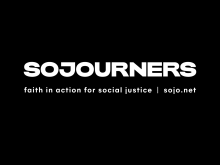

My Darling Daughter:
I’ve been meaning to write you this letter in case you need it when you’re older, but after hearing about the Dec. 28 suicide of transgender teen Leelah Alcorn, I feel an urgency to get this down.
Right now, you’re not even a year old, far too young to understand the tragedy of how Leelah, feeling socially isolated and rejected by her Christian parents, stepped in front of a passing semitrailer on an interstate in Ohio. She was just 17. As a mother, her death breaks my heart. As a Christian, it moves me to speak out.
When I was a few months pregnant with you and the perinatologist told me that the prenatal blood test “showed no signs of Y chromosomes,” I knew that you were a girl. I was thrilled.
On the sunny spring afternoon that you were born, the nurses wrapped you in a blanket and put a tiny, gender-neutral pink-and-blue-striped cap on your little head. As soon as I started speaking to you, my voice a steady coo, you settled, and I knew that you were my daughter.
But what if it turns out you aren’t?
What if you are actually my son?
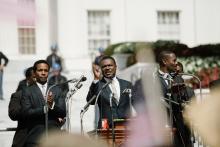
“I do know the voice of God.”
That’s what David Oyelowo, the actor who beautifully portrays Dr. Martin Luther King Jr. in the new film Selma, told me last night. It’s that voice, he said, that called him to play the role.
I was at the December preview of Selma in Washington, D.C., and then took my family to see it at an early showing on Christmas day. I sometimes respond emotionally to films, but Selma made we weep. It also made me grateful that for the first time in 50 years, a big studio had finally made a film about Dr. Martin Luther King Jr. and the people in the movement around him in Selma. I believe this movie, unlike most others, could actually change the nation’s conversation about race and reconciliation at a crucial time, perhaps even providentially.
On the premiere night, I met David Oyelowo, who spoke publically after the film about his faith. I don’t hear that kind of talk very much in D.C., but David was open and forthright, saying that playing the great Christian leader became part of his personal calling as a Christian.
In our conversation afterward, I asked David what he meant by those words. His answer prompted me to ask for an interview with him before the film, which debuts this weekend, came out. He and I talked last night (listen to the full interview below).

In the first moments of Selma, I feel butterflies rise in my stomach as Dr. Martin Luther King, Jr. (David Oyelowo) practices his 1964 Nobel Peace Prize speech while trying to tie his ascot. Butterflies rumble in my soul. I am almost fearful as we step into the world of Selma, because I am a student of the Civil Rights era. The movement’s lessons have shaped my life. I feel like I am about to meet my heroes.
So, King fiddles with his ascot in Oslo, Norway, and his wife Coretta (Carmen Ejogo) comes close to comfort him, and little girls descend into the bowels of the Sixteenth Street Baptist Church in Birmingham, Ala., and butterflies rise and my soul sits at attention. I know what is coming: hell … and glory.
The film still haunts me. Every performance is nuanced, textured, and humanizing. Director Ava DuVernay’s technique is breathtaking. Her eye translates words into feelings into images — moving images that never leave you. Brutality and reverence occupy single frames. At once, the audience is horrified and awe-struck. I have no doubt Selma should win Oscars.
It is an amazing film, but it doesn’t haunt me because of its excellence. As I sat in the dark watching the movement unfold before my eyes, it was not the past that haunted me. It was the present.
A makeshift bomb placed outside a local chapter of the NAACP in Colorado went off yesterday, releasing smoke but failing to ignite a gasoline can placed beside it, Newsweek reports. There were no injuries.
The FBI has declared the bombing "deliberate," but is still investigating whether the NAACP was the intended target. The building's other tenant, a hair salon, does not appear to have been the target.
The media's slow-to-silent response to the incident has raised ire on Twitter, with many concerned that the bombing did not make news on mainstream outlets until today.
"Thankfully, no injuries were reported, but the fear it struck in the local community and in citizens concerned for issues of racial justice everywhere were felt immediately ... In a time when racial tensions in our country appear to be growing, the troubling nature of this act of domestic terrorism should be blatantly obvious, but the lack of mainstream media coverage of the bombing ... was downright disturbing," wrote Shaun King, staff writer for the Daily Kos.
According to Newsweek, the FBI has asked that anyone with information call its Denver tip line at 303-435-7787.

JEN BAILEY PAYS attention. She recognized the paucity of healthy food choices in Nashville’s “food desert” areas and designed an interfaith toolkit to enhance the skills of food- justice organizers tackling that issue. Jen — now Rev. Bailey of the African Methodist Episcopal Church — listened to the recurring theme in her own lived experience: Faith communities can be a catalyzing source for good and are even more powerful when they work together. Bailey hasn’t yet hit 30.
Millennials have gotten serious press this year from Pew, NPR, The Huffington Post, The Atlantic, and the like. Amid their diversity, these roughly 80 million people appear to share several common traits. They are global citizens who want to act and impact locally, who crave meaning, seek entrepreneurialism, prioritize people and networks over institutions, and often profess different parameters of and pathways to success than previous generations. If Bailey is emblematic of her generation in any way, we have a lot to be hopeful about.
This year, Bailey started the Faith Matters Network (FMN), a “multi-faith alliance dedicated to building the power of people of faith to transform our social and economic systems.” The group focuses on the South and Midwest because both areas are significantly impacted by economic inequality and are highly religious. That is, there is a lot of work to be done and lots of people (theoretically) committed to doing it.
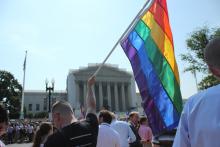
Ten years after Massachusetts became the first state to allow same-sex marriage, gay and lesbian Americans can be wed in 35 states and the District of Columbia (Florida will boost that number to 36, starting Jan. 6). This year, the Supreme Court may put an end to the skirmish by legalizing what progressives call “equality” and conservatives dub a “redefinition” of this cherished social institution.
The court last ruled on gay marriage in 2013 when the justices gutted much of the federal Defense of Marriage Act in United States v. Windsor and delivered a massive blow to anti-gay marriage advocates. Since then, the court has acted by not acting — in effect, doubling the number of states where gay marriage is legal, from 17 to 35, by refusing to hear a slew of appeals last year.
In November, the Cincinnati-based 6th U.S. Circuit Court of Appeals upheld gay marriage bans in four states, which will almost certainly require the high court to decide the issue once and for all.
Conservative Christians have been among the most ardent opponents of gay marriage and rights for decades. How will they respond if the Supreme Court makes gay marriage legal nationwide?
The answer, it turns out, depends on which Christian you’re speaking to.





Optimism tends to accompany a new year. But we leave 2014 somewhat broken and disappointed. The online magazine Slate has christened 2014 “The Year of Outrage.” I bet the name sticks. Slate’s snappy multi-media calendar links the most outrageous news story for every day of the past year. What was so outrageous, and who found themselves offended?
January 29: “XOJane publishes an essay about a white person seeing a black person in yoga and feeling uncomfortable about it.” (Race provided a major source of outrage in 2014.)
According to Slate: ”Who was outraged: black women, nonracist yoga practitioners.”
November 6: “A mom finds mold in a Capri Sun juice pack.”
“Who was outraged: people who don’t think mold should be in juice.”
Slate pumped up the project with eleven essays on outrage. Topics ranged from “The Life Cycle of Outrage” to the twins “The Year in Liberal Outrage” and “The Year in Conservative Outrage.” I don’t know about you, but I think Slate basically named our collective mood as we enter 2015.
Outrage may emerge from petty things: “An Irish cafe bans loud Americans” (July 22). It seems to me, though, that we live in a society intensely marked by outrage. What is one to say in the face of ISIS and its blood lust? Outrage divides us. Do we find ourselves more inclined to outrage that in Ferguson, Missouri an unarmed black youth died from at least six gun — or do we find it more offensive that crowds would protest the death of a young man who may have attacked a police officer?
I know one thing: my social media feeds provide no help. They stream with the outrage of people I love, people I know, and newsmakers I follow.
Here’s the deal: our outrage grows from our most vulnerable places, our basic fear that things are not as they should be. Something is wrong with our world, and in a fundamental way we don’t know how to fix it. Faced with moral and social disorder, the deep evolutionary structure of our brains prepares us to fight: outrage! We may think we’re angry because we’re right — and someone else is so, so wrong. We’re really angry because we’re disappointed.
The opening verses of John’s Gospel confront us with a combination of things that ordinarily don’t belong together. Readers universally appreciate how this prologue applies to Jesus some of the Bible’s most high-flying, most spiritual language (1:1-18). But hints of discord also haunt this most exalted passage.

Over the past year, I have seen a tremendous amount of reformation and renewal taking place in the American Christian community around the topic of LGBTQ acceptance and equality. Like with many other justice issues in the past, entire new movements are calling God’s people forward, deeper into realizing the Kingdom of God on earth as it is in Heaven. And though there is still a lot of work left to do, the changes I have seen over the past year have been nothing short of inspiring.
Two years ago, the conversation around LGBTQ equality in evangelical circles was limited to a few “liberal” organizations, which were viewed by evangelicals as marginally Christian. But in 2014 we have seen literally dozens of evangelical leaders and organizations appear on the scene, taking momentous leaps forward as they advocate for their LGBTQ brothers and sisters around the world.
By God’s grace, I have been able to witness much of this transformation first hand. Last fall, I began writing about LGBTQ equality on my blog Revangelical. Soon after, a few posts turned into a clear calling from God to be a voice of reformation on this issue from within evangelical Christianity. I felt compelled to speak up with all of my fellow LGBTQ brothers and sisters who have faced so much discrimination and oppression at the hands of those who call themselves “people of Good News.”
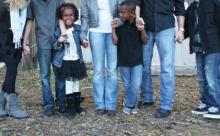
Before she and her husband adopted a son and daughter from Ethiopia, popular evangelical blogger Jen Hatmaker said she had a different view about race in America.
“A couple years ago, I would’ve said we’re moving to a post-racial society because I was so under-exposed to people of color and the issues they deal with on a daily basis,” said the white Christian author, whose home renovation to make space for their growing family of seven was recently featured on HGTV.
As evangelicals have turned their attention toward adoption in the past decade, families like the Hatmakers are grappling with race relations in a profoundly personal way, especially as national news spotlights racial tension in New York, Ferguson, Mo., and elsewhere.
And evangelicals aren’t alone: A new Gallup poll found that 13 percent of Americans believe racism is the country’s most important problem, the highest figure since the 1992 verdict in the Rodney King case sparked riots in Los Angeles.
And, as Gallup noted: “After barely registering with Americans as the top problem for two decades, race relations now matches the economy in Americans’ mentions of the country’s top problem, and is just slightly behind government (15 percent).”
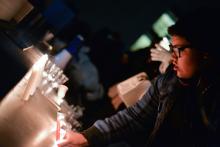
What can local churches do to support ongoing protests against, and indeed upheaval of, an unjust criminal justice system and deep-seated white supremacy? In a season that Lisa Sharon Harper recently described as “Advent as protest,” what might it mean for Christians to anticipate the coming of Christ by physically challenging oppression? For pastors all over the United States, these are the questions of the moment.
In Washington, D.C., local faith communities sought to live into the vision of Advent as protest by holding a “vigil for justice.” Although this vigil beautifully documented the capacity of the local church to advocate for justice, the way local media framed the vigil forces communities of faith to think more deeply about their understanding of solidarity.
Spread out along nearly 6.5 miles of 16th Street, hundreds of people held candles and signs in support of recent protests against racial injustice. As people passionately waved their signs or held their heads down in prayerful lament, passing cars and buses slowed to honk in support. Catching on with the theme of Advent, attendees hoped to shine light in the darkness not only to create awareness and show solidarity, but also to testify to the hope of faith.
Cecilia Choi, a member of District Church explained, “This is the time of Advent when God came and he started his work of reconciliation with us by becoming one of us. And I think it’s perfect to come out and work on reconciliation and joining with our black brothers and sisters. They’re not just our neighbors, they’re our brothers and sisters in Christ. We have such an obligation to them. I think this is an act of worship.”
When asked why she was on the streets, one woman responded, “Well, what do I say? [Laughs.] That’s the meaning of our faith! To be one with people who are suffering.” Another man called racism “the deepest sin in the United States.”
Such descriptions of the vigil reach to the core of the church’s mission to “do justice, love mercy, and walk humbly.” Here are churches standing in solidarity with those suffering at the hands of racist oppression as an “act of worship.” Here are churches bringing their resources of prayer, lament, and peace into the public sphere, challenging observers to wrestle with God’s call to justice. Yet, though the event was beautiful, the way it was framed by local media raises tough questions for churches. Contrasting this demonstration with other recent protests, one reporter said, “This protest was in contrast to many of the protests we’ve seen over the past few weeks, with groups blocking traffic and loudly chanting. This group was quiet and purposeful.”

Sometimes we dehumanize people by speaking, thinking, or imagining about them in generalizations, by covering their true identity with generic labels and terms that are impersonal, cold, and less meaningful. For example, you can refer to your brother as “someone that I know” or your best friend as “this one guy.”
We often do this when we want to create separation or disassociate from others — often in order to protect ourselves, make ourselves look better, or attack others. Thus, we refer to our spouse as “this person I know” when we’re agreeing with a coworker about people who hold an opposing political belief we disagree with, or offhandedly use the phrase “this guy I know” about our dad when talking about annoying habits that we can’t stand.
We see Peter do the same thing in the Bible, referring to Jesus — his savior, closest friend, companion, teacher, and leader — as simply “him” when being accused of knowing Jesus right before the crucifixion.
Luke 22: 56-57: Then a servant girl, seeing him as he sat in the light and looking closely at him, said, “This man also was with him.” But he denied it, saying, “Woman, I do not know him.”
I don’t know “him.”
One word: him.
No harm done, right? It’s just a simple pronoun.
We do the same thing all of the time.
Him, her, she, he, them, those people, etc.
As innocent as this practice may seem, the ideas behind them are more cynical, and it becomes much more serious for Christians when we use terms, thoughts, and ideas as a way to disconnect people from God.

Last week the Vatican released the final report on its unprecedented investigation of Roman Catholic sisters in the United States. Six years ago, when the Vatican announced the apostolic visitation (its formal name), many of the sisters whom the investigation affected responded with hurt and anger. Now, thanks largely to competent, spiritually grounded leadership on the part of American sisters, the spirit is conciliatory.
When the Vatican launched the investigation in 2008, under Pope Benedict, to “look into the quality of life of religious women in the United States,” the announcement was met with suspicion and apprehension. Since the Vatican had previously only ordered an apostolic visitation when a group had gone astray, sisters wondered what the Vatican wanted to investigate and why. Some congregations reported that their elder sisters felt that their whole lives had been judged and found wanting," remembers Sr. Sharon Holland, president of the Leadership Council of Women Religious, which represents about 80 percent of the 57,000 nuns in the U. S. When Sr. Sandra Schneiders, professor emerita of New Testament and spirituality at the Jesuit School of Theology in Berkeley, Calif., learned of the visitation, she warned sisters to be cautious, treating the visitors as “uninvited guests who should be received in the parlor, not given the run of the house.”
In a situation that could have escalated badly, American sisters rose to the occasion.

On a Sunday when the dominant color in Christian churches is pink — a symbol of joy for the third Sunday of Advent — I was wearing a black shirt, black pants, and a blue tie. Others in our congregation were wearing various combinations of black or blue.
This was a modest way of showing solidarity with African Americans and a reminder that “Black Lives Matter” while still showing empathy for the police in the Madison, Wisconsin, area who have worked hard over the years to have a diverse force that works to serve rather than dominate the varied racial and ethnic communities that exist here.
But even with a nod to the pressure police are under these days, the dominant focus was on the series of killings of unarmed black people. And we know that not all police departments have made the same efforts that have happened here over a generation — and that our police departments are not perfect either.
The movement to wear black on December 14 came from several African-American denominations across the nation. Here in Wisconsin, Rev. Scott Anderson, Executive Director of the Wisconsin Council of Churches, joined faith leaders in urging people to wear black to church on that Sunday.